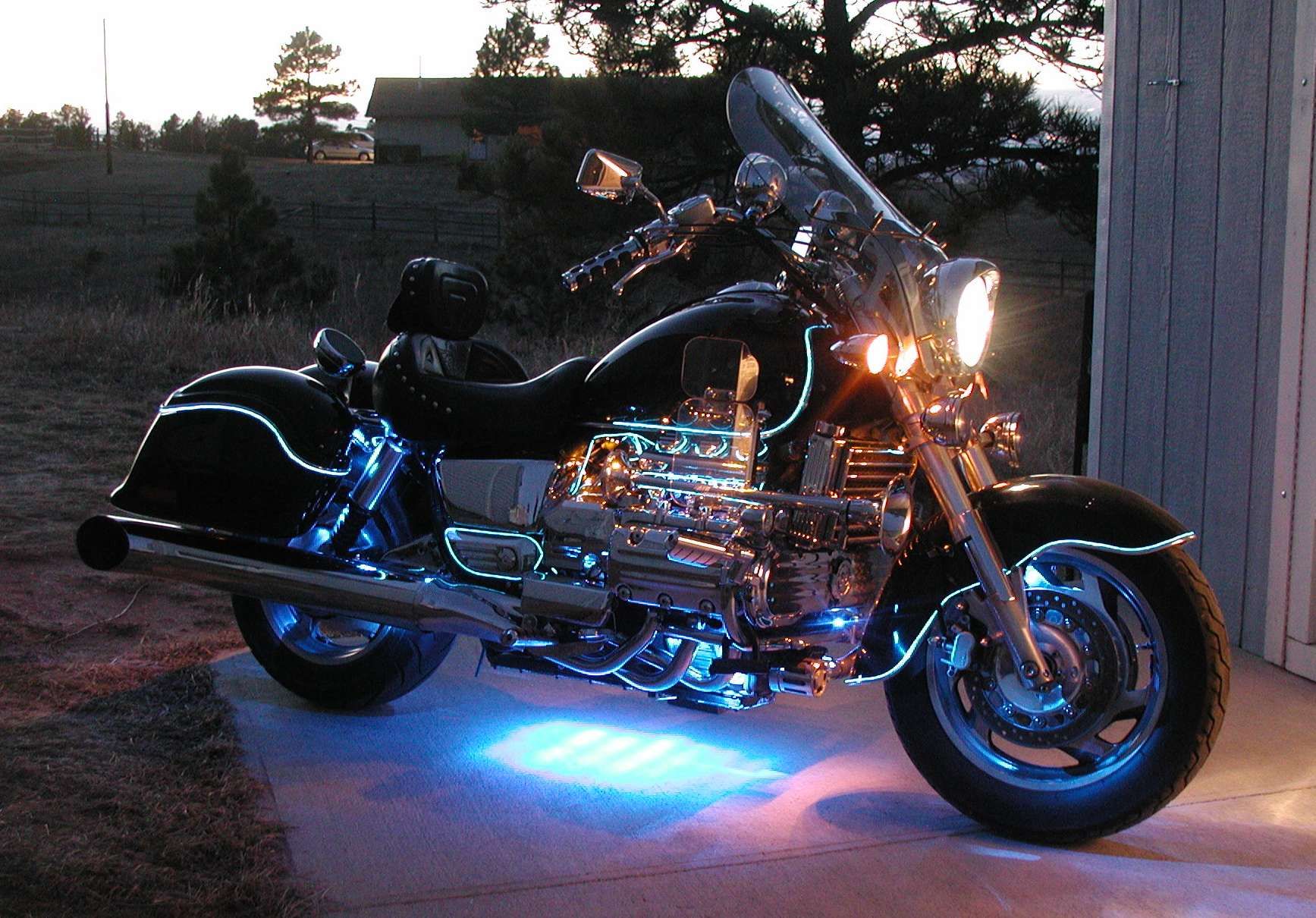Pretty nice! I've added several hundred LED's to my Valk, and done some similar work on my wing, some time ago. A couple tips, from the install soaking for many years now:
I installed LED's inside my trunk, in '02, and installed a N.O. pushbutton microswitch in the hinge area. Worked great, until the switch broke and it turned on the LED's. They don't draw much power, but they draw enough to completely ruin your battery if the switch breaks. I said I need something simple and foolproof. Couldn't find a mercury switch - turns out they have been outlawed by our wonderful government. So I took apart an old thermostat, and installed the mercury switch inside the trunk lid covers. Problem solved, it can't fail now. There are tip-switches available now, from any electronics supply house - I don't know what technology they use. I trust mercury though. Simple, self-cleaning, can't fail if you don't break the glass. You can find mercury switches in older wall switches, and thermostats.
I installed Alpine 5" speakers front and rear on the wing. Yeah, had to do some cutting to fit them. But what an improvement in sound! Who says they aren't weather resistant? Look like it to me, certainly way better than the paper POS speakers Honda supplied. The Alpines have synthetic cones, plastic for want of the tech specs to look them up. They've been in there for years, and have far outlasted the Electrical Connection, then the Blaupunkts I used on the Valk. Been soaked in the rain many times, and I get them wet sometimes washing it, too. Though I don't wash as often as some, I prefer to do most cleaning with an air blast, then hand cleaning with Honda spray cleaner.
BTW, Blue LED's are significantly more expensive than all the other colors. And require higher voltage, so they require significantly different resistors, too. The energy in a particle of light (a photon) is related the color of that light--with blue photons having more energy than red photons. Here is where the difficulty in making blue LED's comes in: to produce a blue photon, the electron in an LED must give up lots of energy as it fills the hole in the anode. This need for a large energy release places a severe demand on the semiconductors from which the blue LED is made. These semiconductors need an unusually large band gap--the energy spacing between two types of paths that electrons can follow in the semiconductor. It wasn't until recently that good quality semiconductors with the appropriate electrical characteristics were available for this task. Blue was long considered the “holy grail” of LEDs – the missing color in the RGB triad (Red - Green - Blue) used to create full-color pixels in computer monitors and TVs. Blue was the missing color for more than 25 years after red and green LEDs became commercially available, because scientists failed to find a way to make blue on existing equipment. Scientists finally invented an alternate way to make blue LEDs, but the process requires far more complex and expensive equipment, involves much more expensive raw materials, and is considerably slower. Until Fox Group’s commercial production breakthroughs, blue LEDs have been about ten times as expensive as the tried-and-true red and green indicator LEDs.
So if you got blue LED's when you thought you were buying white - you actually got a more expensive product by mistake. I actually put blue LED's in my trunk
on purpose. Partly because the bike is "Illusion Blue", besides the snob appeal.
BUT - on the other hand - There are two primary ways of producing high intensity white-light using LEDs. One is to use individual LEDs that emit three primary colors—red, green, and blue—and then mix all the colors to form white light. The other is to use a phosphor material to convert monochromatic light from a blue or UV LED to broad-spectrum white light, much in the same way a fluorescent light bulb works.
So I could be completely full of crap and your blue LED's could be option two above - simply SNAFU'd white LED's that are the blues with missing phosphor...
I still like the blue better. And I paid extra for the blue LED display on my Escort Passport, and the underlight panel and all the blue LED's on Deerslayer.

Anyway, that's all I have for now. Nice job on the LED's...

